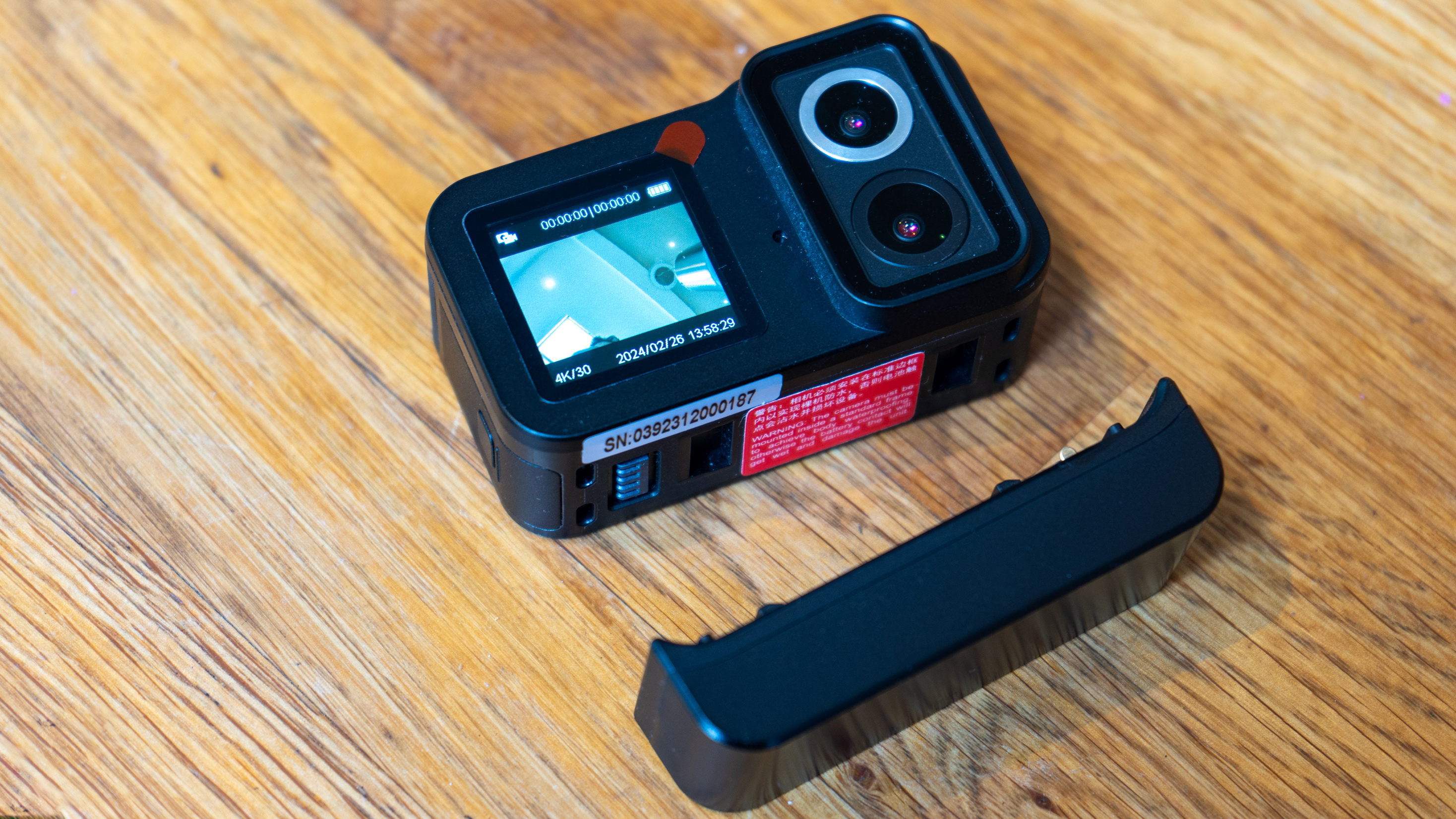
Action cameras has become a very competitive space, and in recent months we've taken the controversial step of saying that the DJI Action 4, not them more famous GoPro, is the better choice for most people and the main reason was the larger image sensor which helped solve low-light imaging, a longstanding problem for GoPro's generations of action cameras.
Video formats: 4K at 30fps, 2K at 60fps, 1080p & 120fps
Photo res: 20MP
Video modes: Normal, Motion detect, Timelapse, Slow, Car, Pre-rec, Livestream, Webcam
Stabilization:
Field-of-View: 154
Digital Zoom: 8x
Video: H.264, H.265
The DJI, however, requires pockets just as deep as a GoPro, while SJCAM have long offered alternatives which keep costs down. With the launch of the SJ20, they are looking at GoPro's low-light problem but rather than solving it with a pricey sensor they're taking a leaf out of the mobile phone designers handbook and simply adding a second 'night vision' camera.
The device is taking on the flagships in other ways two, with an extendable battery system which offers creators the option to balance weight and battery time when setting their camera up. SJCAM have also managed to cram a massive 2.29-inch touch-screen on the back and a 1.3-inch monitor screen on the front.
Finally SJCAM are taking on the premium models with a 6-axis gyro to assist the video stabilisation – so some hope it'll be as good as the big names – as well as software for phone control and Livestreaming.
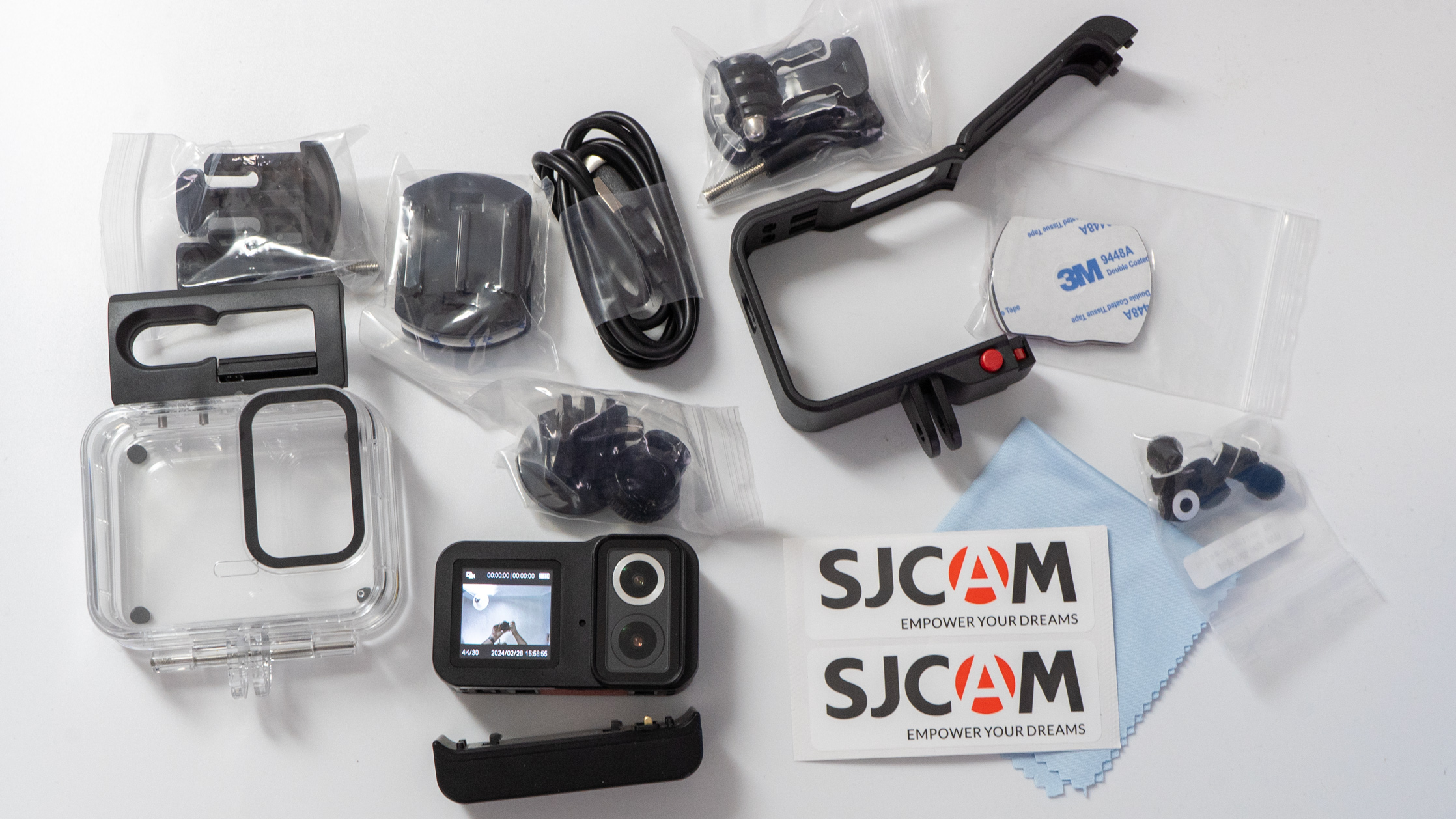
Build and handling
Compared to the size of an action camera, the SJ20 comes in a pretty hefty box. Clearly a good deal of thought has gone into this bundle as a whole, rather than just the device so – intrigued though I was by the collection of accessories – I still went straight for the main camera.
The device is quite short and the entire back has a gloss touchscreen flanked by branding. There is a hatch for the USB-C charging port and MicroSD card on the left (looking from the front). Next to the shutter button is a slightly smaller button marked 'M' and this turns out to be crucial to the operation of the camera – something I didn't work out straight away which frustrated me a lot at first.
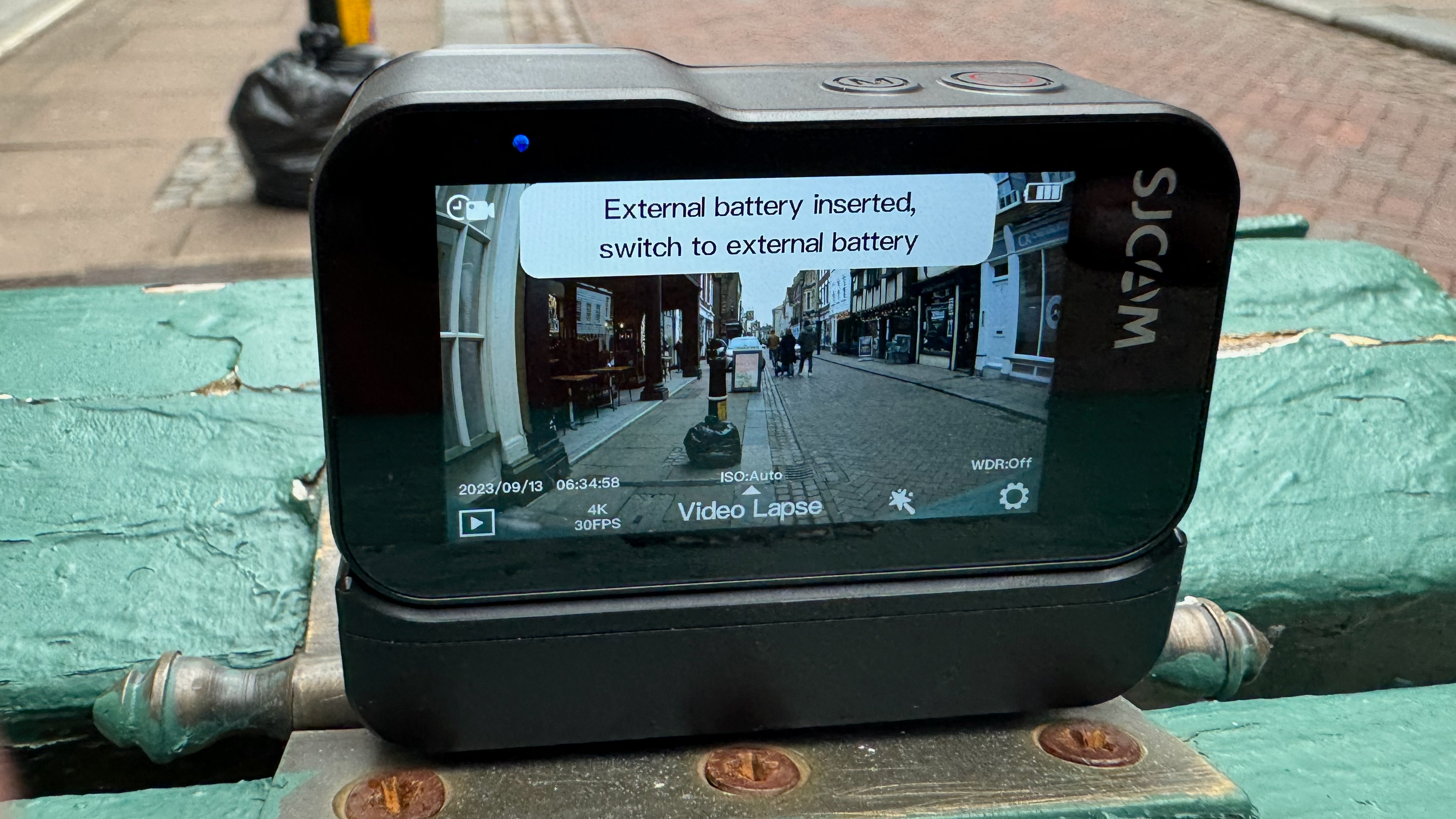
The base of the camera has two recesses for a mount to clip to, or a battery and next to them, near the door, is a port for the power to flow from the battery. Should you attach the battery, however, the door (and USB-C charging port) will be inaccessible. But wait, you need to charge via the camera. So, you need to open the flap and re-attach the battery to charge it via the camera. Inelegant! All this for a battery which, when attached, leaves the camera still smaller and lighter than an Insta360 Ace Pro (a premium low-light action camera).
Oh, and you might also find the battery connection a little unstable – disconnecting and reinserting itself no matter how you position the plastic switch. I know I did.
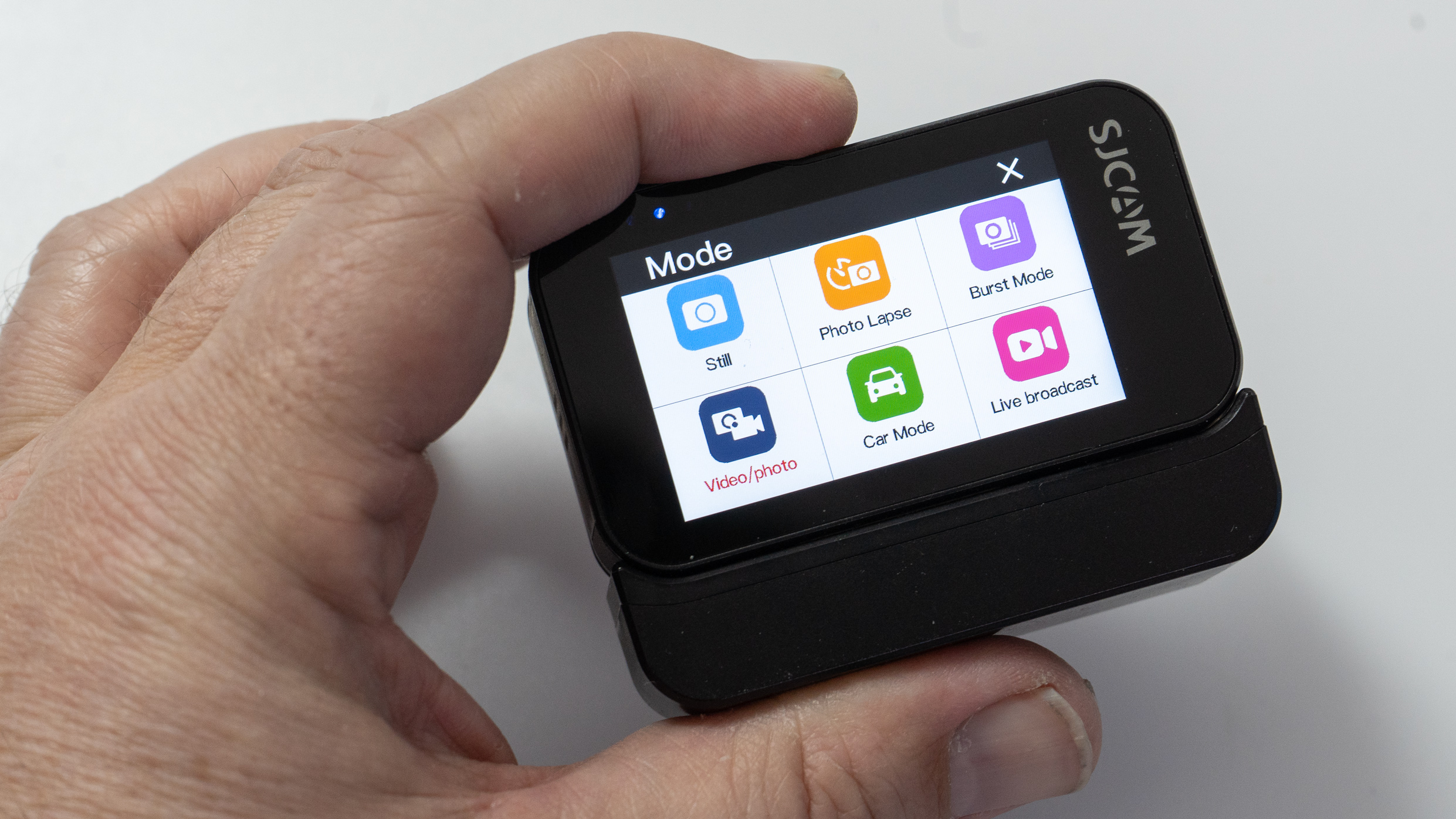
Powered up, the camera offers the user the choice between two different cameras and two different screens, but only one of the screens is a touchscreen. The shutter button serves as a power button (long press) and the 'M' button switches camera with a short press and active display with a long press.
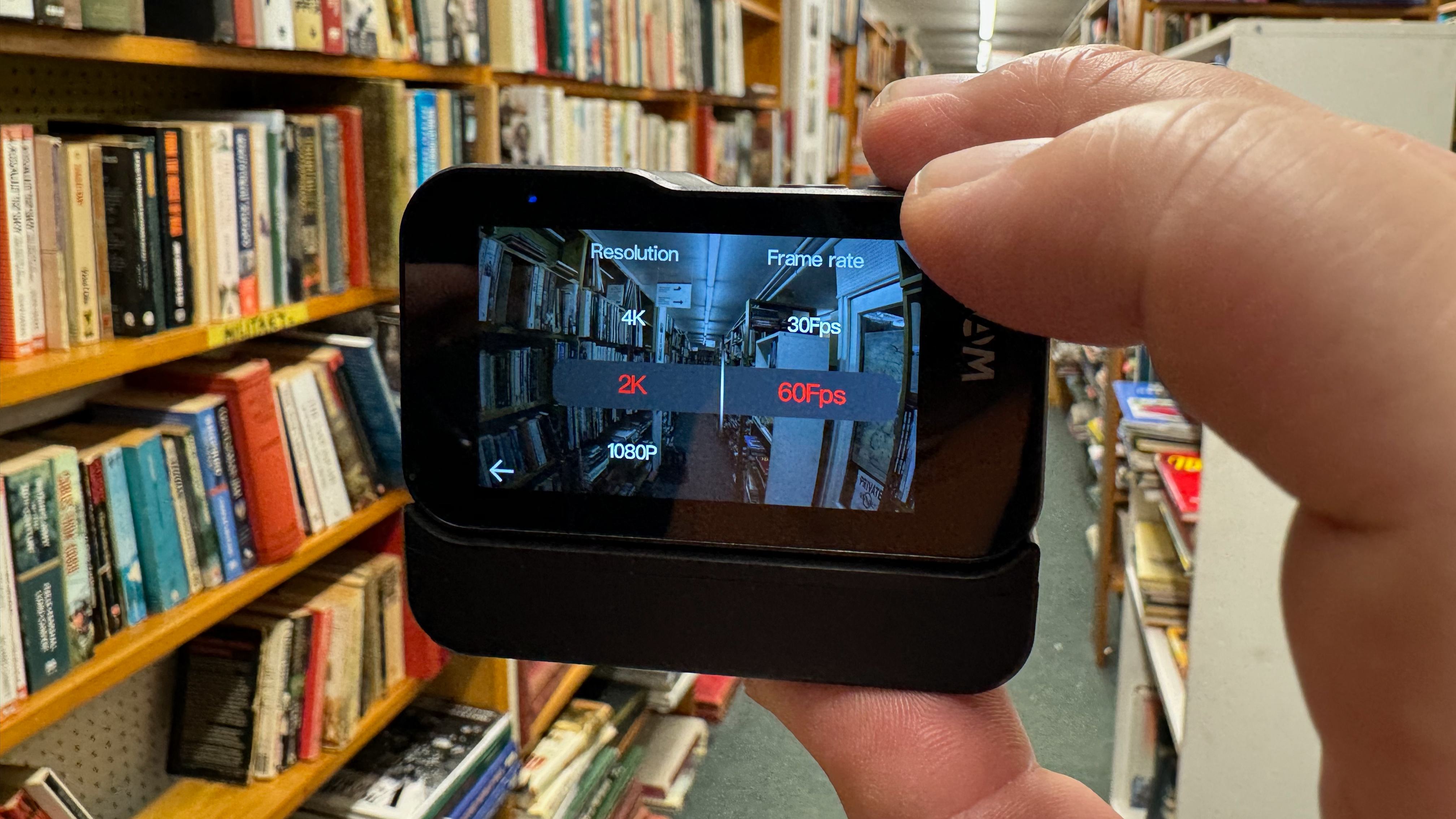
Swiping up brings up the main camera menu, which is a grid of nine options, though this isn't immediately apparent. You see 6 and need to scroll down to see more (there are nine in total), but there isn't a scroll indicator of any kind. Back on the main viewfinder screen swiping left and right, if you did so convincingly enough for the system to notice (again I suspect the laggy system wasn't quite up to the job) could page through the modes and save a trip to the menu.
Swiping down from the top reveals a six quick links (though, again, one of these is on a second page) – oddly one of these is 'Front Display' which mimics the action of the screen switch. This is a truly terrible bit of user design because if, like me, this is how you first engage the front display you may be left having no idea how to get back to the rear screen (the camera will remember which screen you were on when you power down!).
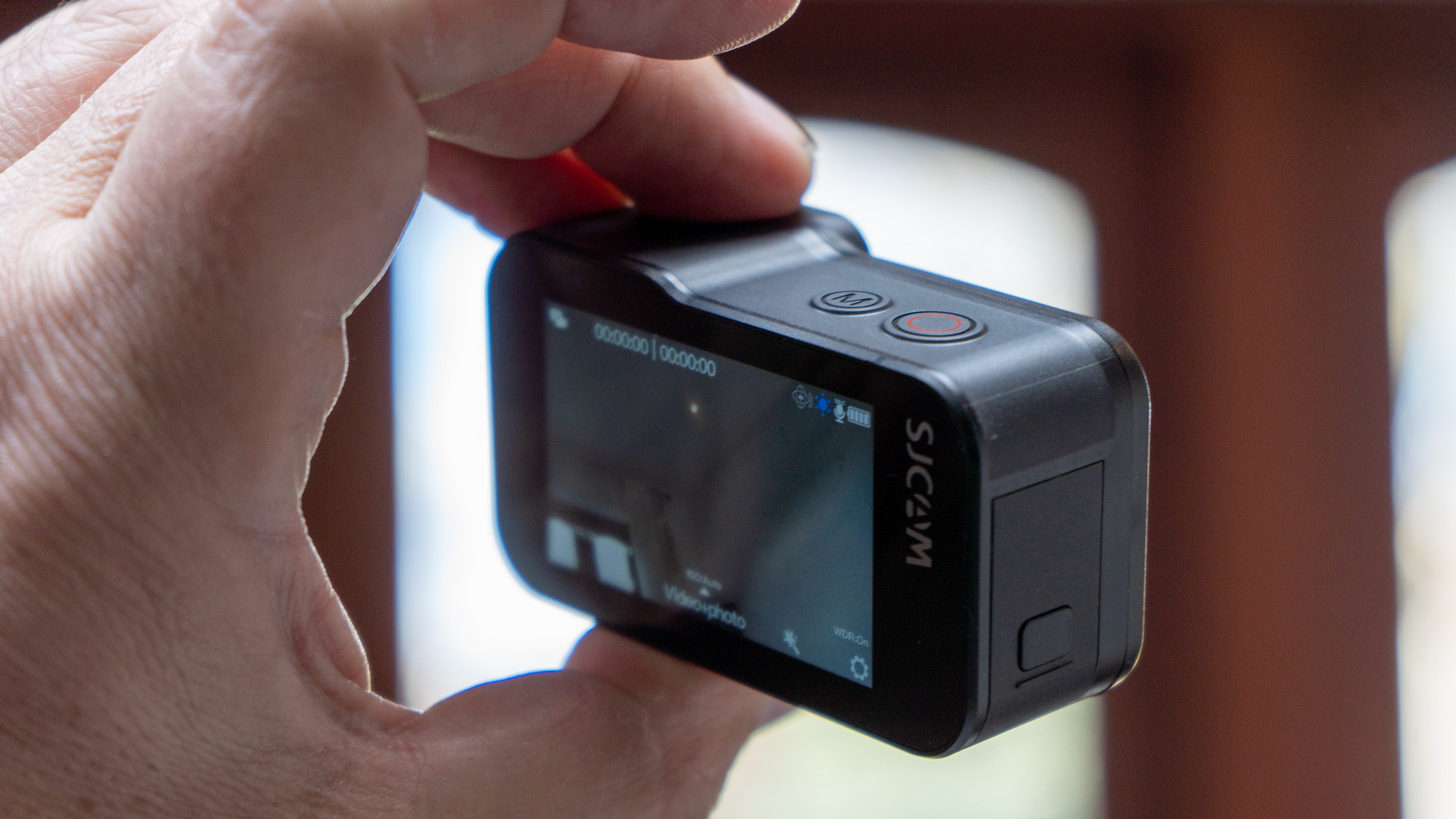
Performance
Sadly two low-quality cameras isn't necessarily a better solution than one good one. For one thing as a user you – as a user – have been handed a task you aren't usually expected to have to manage with an action camera; deciding which camera to shoot with. Then you need to manage it which is a little bit fiddly because the interface is, ultimately, a little bit laggier than I'd have liked, even if all the features are there.
I'm also uncertain of the advantage of a detachable battery setup given the small size – the extra bulk isn't that bad compared to some action cameras and a single case could have been made watertight. What I can say is that the contacts must be poorly made as that on my sample the battery kept becoming disconnected and reconnected according to an on-screen warning.
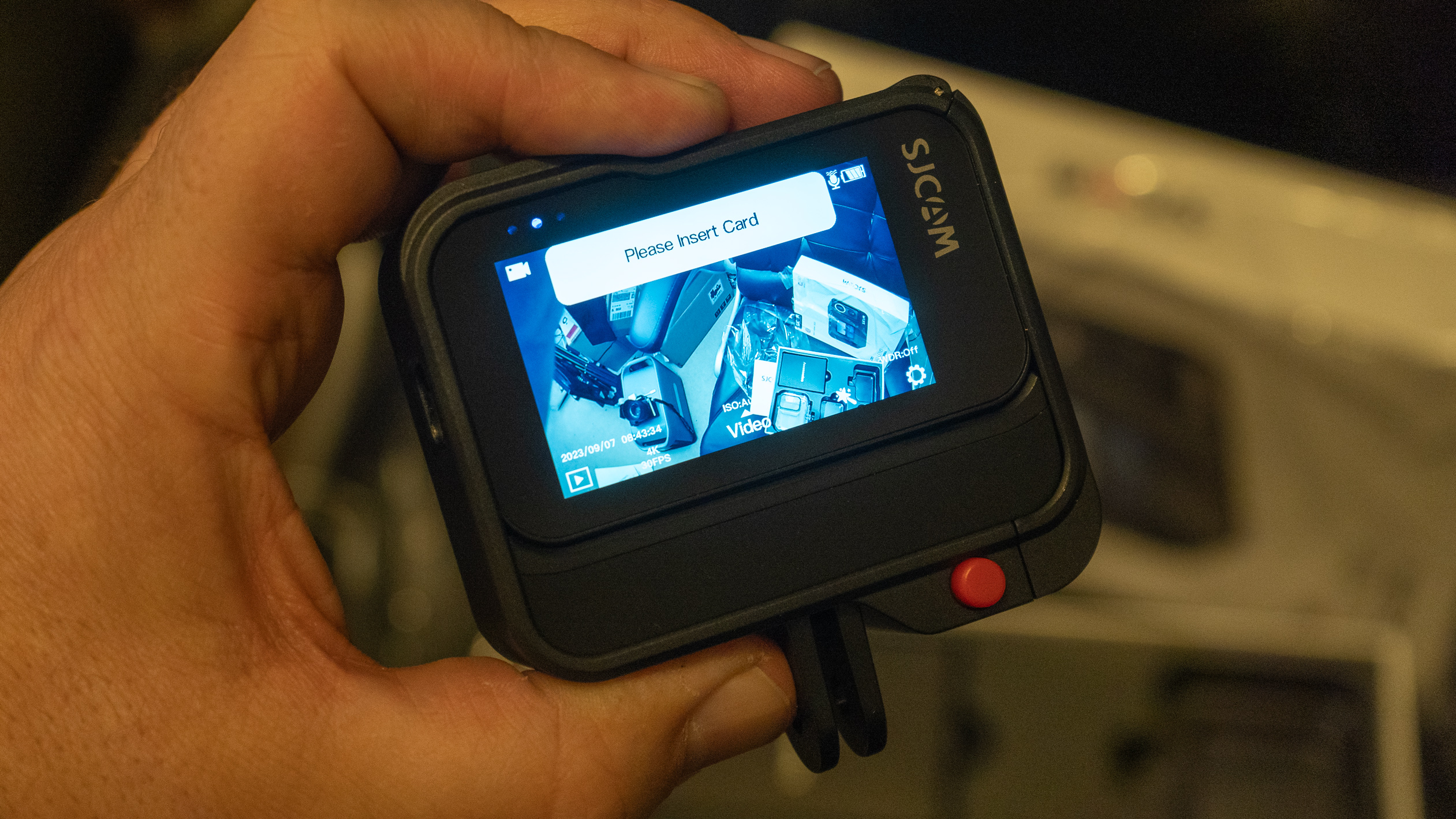
Video
I tested the video on a cloudy day, and on a few evenings. The way the camera handled color and light put me in mind of my first GoPro (a Hero 2); in both day and night the dark areas showed nearly no evidence of detail, and movement was not completely suppressed by the stabilization.
The microphone also seemed very prone to pops, very vulnerable to wind and other noise, and not terribly well synchronised with the video.
The night camera, to be fair, does a decent job of picking up low light tones (though this is an urban environment with lighting), but it cannot cope with the areas of light – it's a shame the system isn't taking advantage of the other camera data!
Stills
The still images invite a good deal of questions about the camera. Areas of the frame – not those at the extremities – seem to be soft, while areas both far from and near the lens are sharp making it difficult to pinpoint the problem with the optics. Cyan/magenta fringing is also very apparent near the edges, even where the sharpness does seem improved. Finally, the digital zoom is, well, there if you want it is the best I'll say – the aliasing is very apparent!
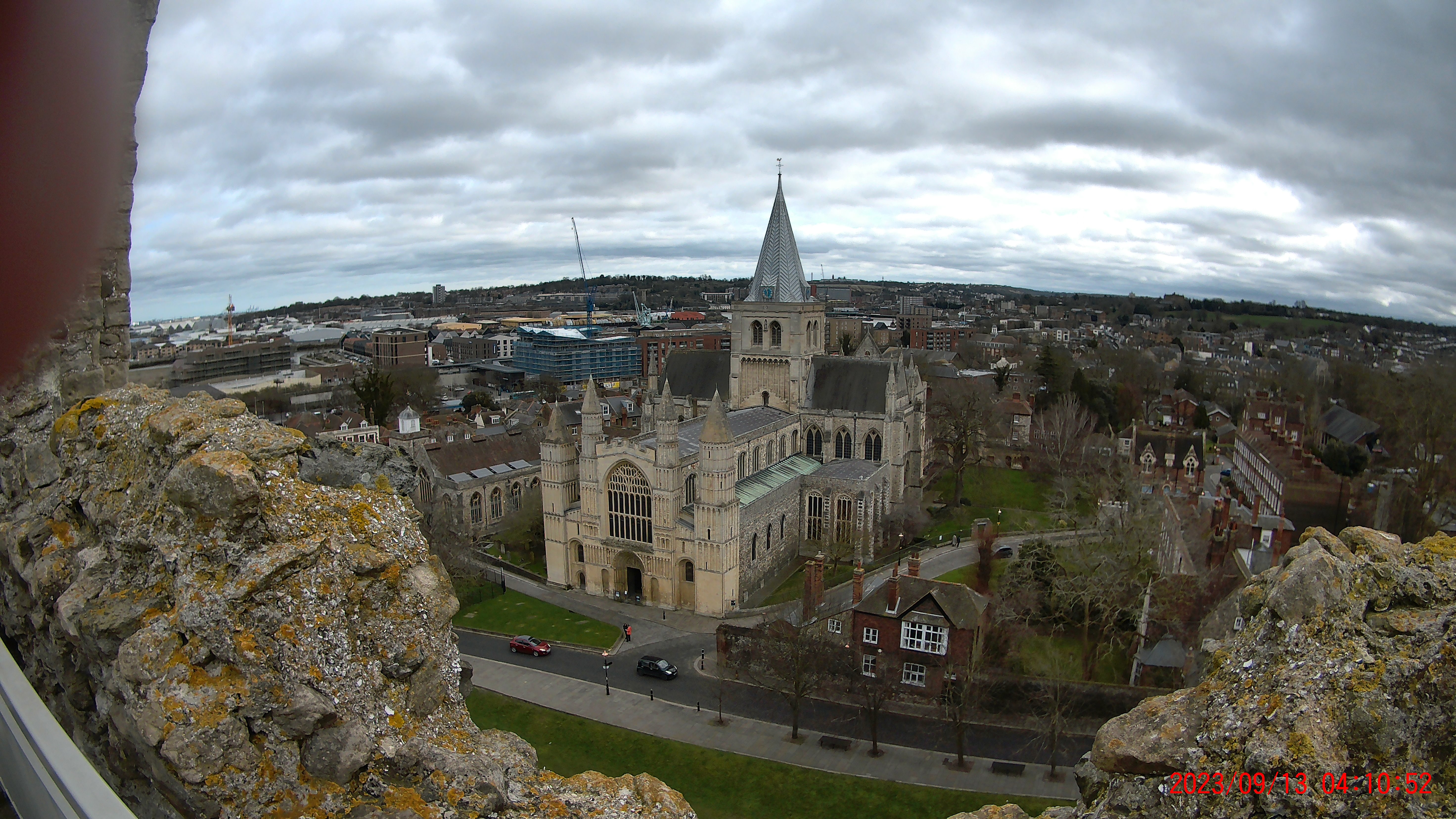
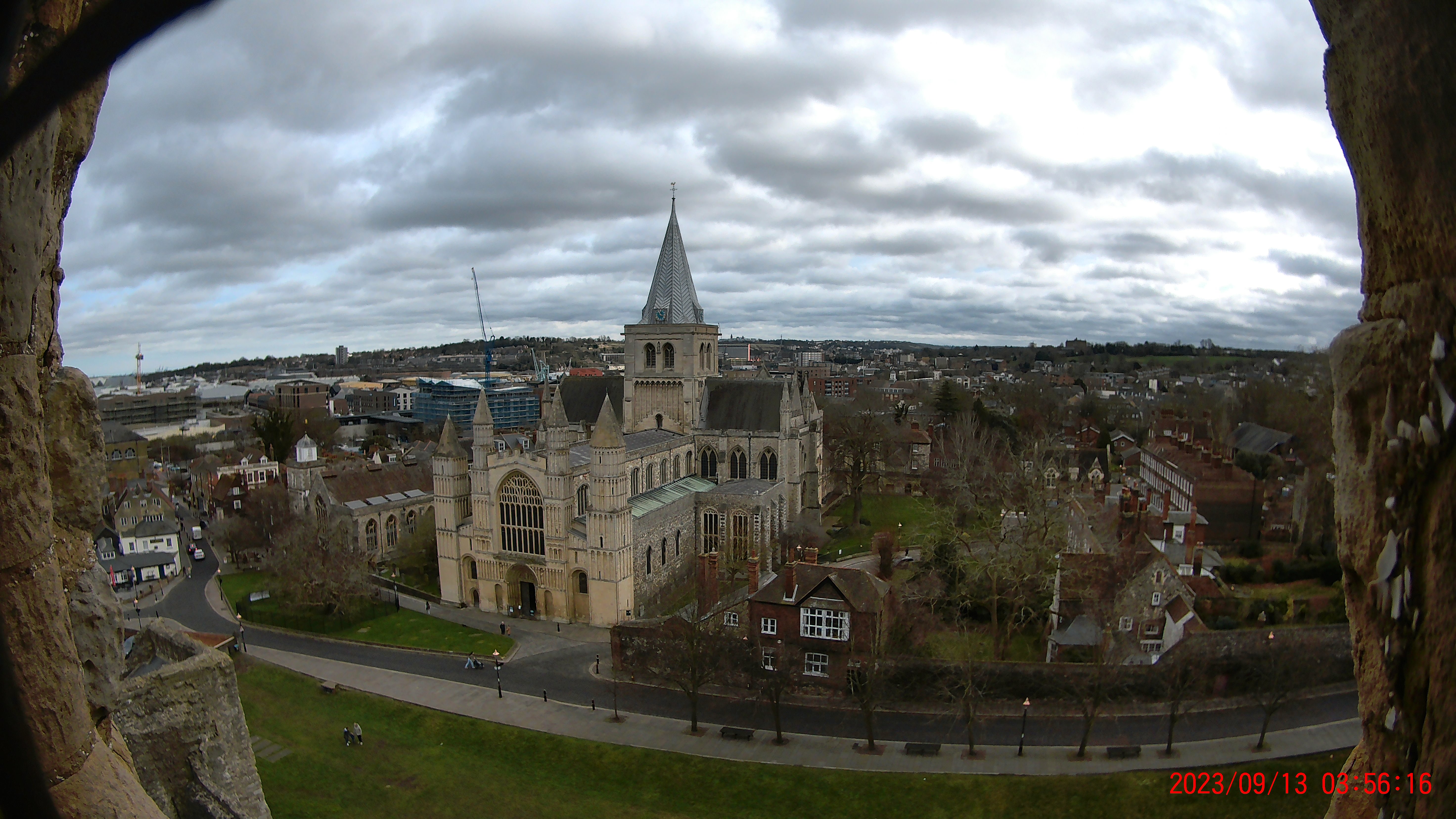
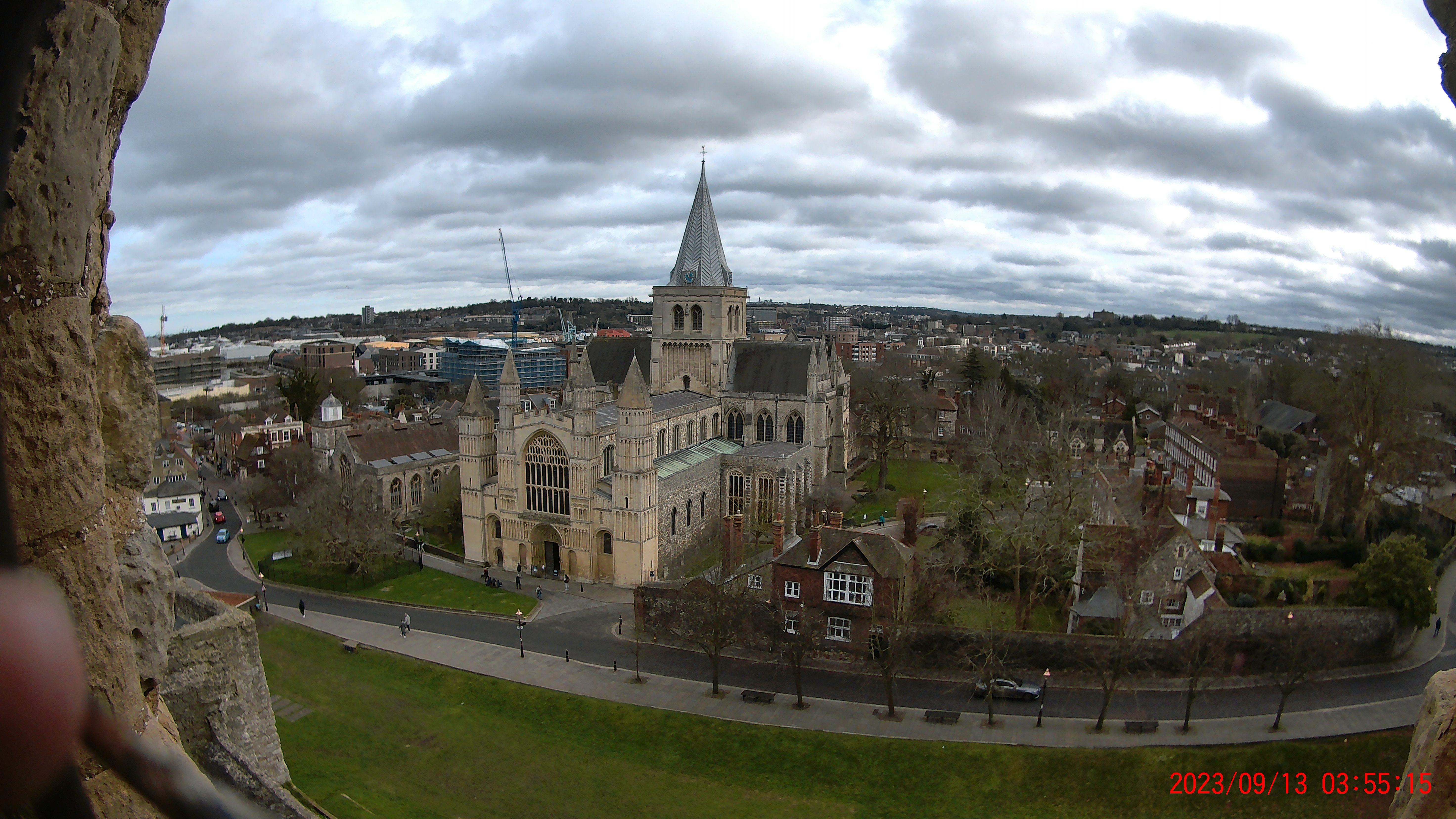



Smartphone app
There is one, but it insists you register without really bothing to tell you how to go about doing that. If you enjoy a surreal guessing game you might eventually achieve this process, and i doing so hand your email address to yet another organisation with whom you can't be 100% sure it'll be safe, before ending up with an app that – in my case – shows me pictures of different cameras most times I open it. But boy does it want permissions to access my iPhone! It will, however, allow remote control of the camera.
Overall Verdict
The main problem I have with the SJCAM SJ20 is the price. When I reviewed it, the RRP was $229 and, though I've seen it available for less since, that price pushes it against premium products and, ultimately, I would much rather have a slightly older action camera model from DJI, Insta360, or GoPro than tolerate the build quality available here.
That's a shame, because borrowing the dual camera idea is innovative in this context, and really has the potential to solve a difficult issue. Sadly the device doesn't seem to have the power or software to make the best use of it and the upshot was that I came away very aware of how significant the advances in digital stabilization have been, and less concerned by other matters.
In summary, then, this is an adequate action camera much of the time, with a good selection of accessories supplied with it, but it needs to be cheaper to justify the quality compromise you make for it.
Should you buy the SJCAM SJ20?
✅ Buy this if...
- You want an action camera that works in low light
- You're looking for a detachable battery for varying weight and vlogging options
- You want to shoot in up to 4K
🚫 Don't buy this if...
- You want waterproofing without a body
- You're looking for good-quality stabilization
- You need decent quality sound recording







